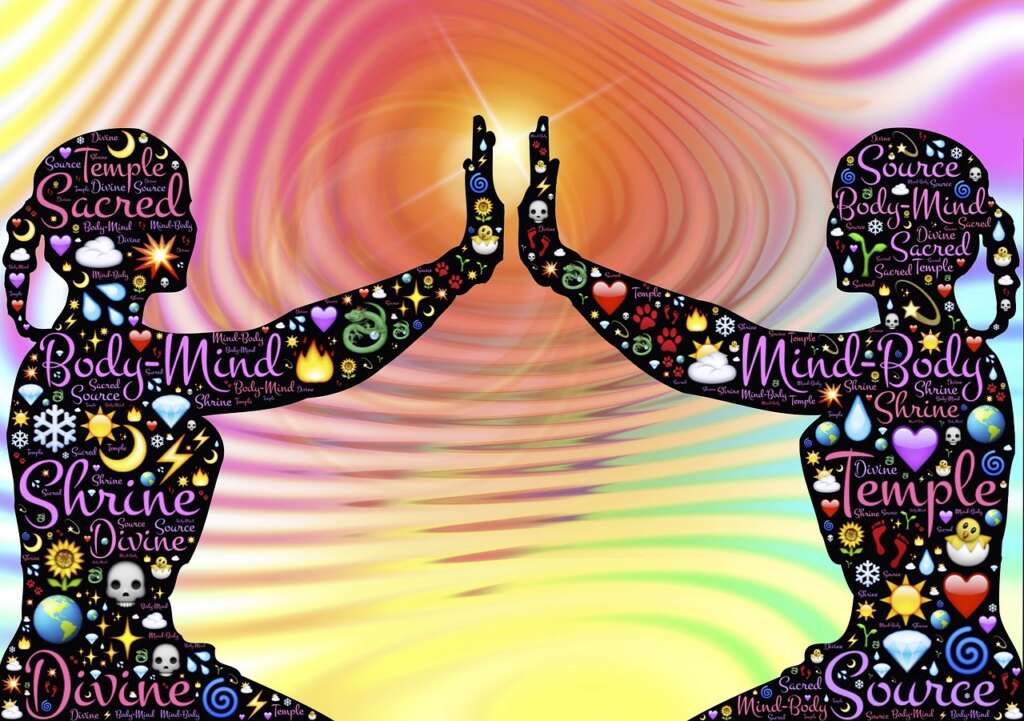SPOILER ALERT!
~ Mind-body practices (MBP) have a calming and relaxing effect on the body.
~ They include meditation, yoga, taichi, qigong, deep breathing, etc…
~ MBP reduce the effects of stress by increasing the activity of the parasympathetic system (the calming system) and decreasing the activity of the sympathetic system (the arousal system).
~ MBP helps reduce the symptoms of PTSD that are related to high arousal
. It also improves mood, reduces stress, lowers blood pressure, and reduce fear in PTSD
~ MBP help reduce PTSD symptoms as an adjunct to therapy, but they must be practiced on a regular basis to maintain the positive results
Post-traumatic stress disorder is characterized by a higher sympathetic (i.e., high arousal) and lower parasympathetic activity (i.e., relaxed state) at rest. The behavioral effects of this imbalance is reflected in hyperarousal, difficulty sleeping, high heartbeats, and overall inability to feel calm and relaxed. By contrast, mind-body practices are touted for their calming effects on the body by increasing parasympathetic activity, which in turn results in lowered heart rates, reduced blood pressure, and overall calmness.
Mind-Body Practices Reduce the Effects of Stress
Mind-body practices include interventions that integrate the mind, body and behavior to improve physical and mental functioning. These practices incorporate various types of stretching movements and postures combined with breathing techniques. They include familiar exercises such as yoga, taichi, qigong, and meditation.
It has been reported that stress-related disorders could induce allostatic load as a response to the body’s attempt to cope with the demands that chronic stress creates. Particularly, allostatic load is reflected in the overactivity of the sympathetic and underactivity of the parasympathetic systems.
By contrast, deep breathing techniques, which are a form of mind-body practices, increase parasympathetic activity causing decreased oxygen consumption, lower heart rates and blood pressure, which in turn leads to a calming effect on the body and a sense of control over the body.
Specifically, slow deep breathing has been proposed to help reset the autonomic nervous system (consisting of the sympathetic and parasympathetic) by causing a shift from sympathetic to parasympathetic dominance, thereby resulting in the synchronization of neural responses in the heart, lungs, limbic system (i.e., emotion center) and cortex (i.e., the thinking system).
Mind-Body Practices Help Reduce PTSD Symptoms
Similarly, mindfulness-based stress reduction (MBSR) have been reported to help reduce avoidance symptoms in post-traumatic stress disorder (PTSD) while yoga has been found to reduce PTSD symptoms through stimulation of the vagus nerve and subsequently activating the parasympathetic system and increasing heart rate variability HRV (High HRV suggests adaptive response to stress, because it does not remain high all the time and instead changes with the demands of the environment. For example, if the body is resting, the heart rate should be low).
Other studies support this finding by demonstrating the beneficial effects of mind-body practices on PTSD symptoms. For example, they have been shown to improve mood, lower stress levels, and reduce fear and the intensity of PTSD arousal symptoms (e.g., high heartbeat, high blood pressure, sweating, etc…).
Overall, the evidence supporting these findings concludes that it is an efficacious adjunct therapy for the treatment of PTSD as some studies show that the positive results are not maintained in the long-term, which suggests that these exercises must be practiced on a continuous basis.
Reference:
Kim SH, Schneider SM, Kravitz L, Mermier C, Burge MR. Mind-body practices for posttraumatic stress disorder. J Investig Med. 2013 Jun;61(5):827-34. doi: 10.2310/JIM.0b013e3182906862. PMID: 23609463; PMCID: PMC3668544.

